Flowers
Flowers are the reproductive structures found in flowering plants (angiosperms). They are important for sexual reproduction in plants and come in a wide variety of shapes, sizes, and colors.
Structure of a Flower
A typical flower consists of several parts:
- Petal: Often colorful and scented, petals attract pollinators such as bees and butterflies.
- Sepal: These are the outermost part of the flower, protecting the developing bud.
- Stamen: The male reproductive part of the flower, consisting of the anther and filament.
- Pistil: The female reproductive part of the flower, consisting of the stigma, style, and ovary.
Functions of Flowers
Flowers serve several important functions in the life cycle of a plant:
- Reproduction: Flowers produce seeds through the process of pollination and fertilization.
- Pollination: Pollen grains are transferred from the anther to the stigma, either by wind, water, or animals.
- Seed Production: After pollination, the ovary of the flower develops into a fruit containing seeds.
Types of Flowers
Flowers can be classified into different types based on various characteristics:
- Complete vs. Incomplete Flowers: Complete flowers have all four main parts (petals, sepals, stamen, and pistil), while incomplete flowers lack one or more of these parts.
- Perfect vs. Imperfect Flowers: Perfect flowers have both stamens and pistils, while imperfect flowers have only one of these reproductive parts.
- Inflorescence: Some plants bear flowers in clusters known as inflorescences, which can have various arrangements and patterns.
Role of Flowers in Human Life
Besides their biological significance, flowers have cultural, aesthetic, and economic importance in human society:
- Ornamental Purposes: Flowers are widely used for decorative and ornamental purposes, such as in gardens, floral arrangements, and ceremonies.
- Food Production: Many fruits and vegetables that humans consume are derived from the flowers of plants.
- Medicinal Uses: Some flowers have medicinal properties and are used in traditional and modern medicine.
By understanding the structure and functions of flowers, we gain a deeper appreciation for the vital role they play in both the plant kingdom and human society.
[Flowers] Related Worksheets and Study Guides:
.◂Science Worksheets and Study Guides Fourth Grade. Food webs/food chains
Study Guide Food webs/food chains
Food webs/food chains  Activity Lesson
Activity Lesson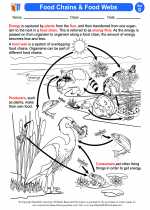 Food Chains & Food Webs
Food Chains & Food Webs  Worksheet/Answer key
Worksheet/Answer key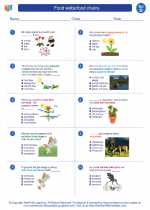 Food webs/food chains
Food webs/food chains  Worksheet/Answer key
Worksheet/Answer key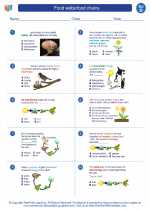 Food webs/food chains
Food webs/food chains  Worksheet/Answer key
Worksheet/Answer key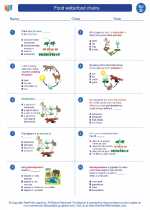 Food webs/food chains
Food webs/food chains  Worksheet/Answer key
Worksheet/Answer key Food Chains & Food Webs
Food Chains & Food Webs  Vocabulary/Answer key
Vocabulary/Answer key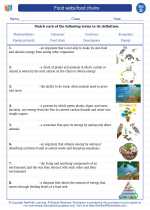 Food webs/food chains
Food webs/food chains  Vocabulary/Answer key
Vocabulary/Answer key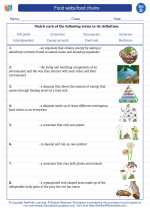 Food webs/food chains
Food webs/food chains  Vocabulary/Answer key
Vocabulary/Answer key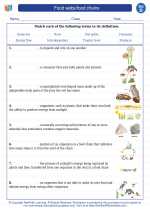 Food webs/food chains
Food webs/food chains 

 Activity Lesson
Activity Lesson
 Worksheet/Answer key
Worksheet/Answer key
 Worksheet/Answer key
Worksheet/Answer key
 Worksheet/Answer key
Worksheet/Answer key
 Worksheet/Answer key
Worksheet/Answer key
 Vocabulary/Answer key
Vocabulary/Answer key
 Vocabulary/Answer key
Vocabulary/Answer key
 Vocabulary/Answer key
Vocabulary/Answer key

The resources above cover the following skills:
Concepts of Life Science (SC1, SC2, SC3)
The student demonstrates an understanding that all organisms are linked to each other and their physical environments through the transfer and transformation of matter and energy by identifying examples of living and non-living things and the relationship between them (e.g., living things need water, herbivores need plants).
The student demonstrates an understanding that all organisms are linked to each other and their physical environments through the transfer and transformation of matter and energy by identifying a simple food chain of familiar plans and animals, diagramming how energy flows through it, and describing the effects of removing one link.
Concepts of Life Science: A student should understand and be able to apply the concepts, models, theories, facts, evidence, systems, and processes of life science. A student who meets the content standard should:
Develop an understanding that all organisms are linked to each other and their physical environments through the transfer and transformation of matter and energy.